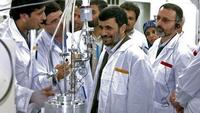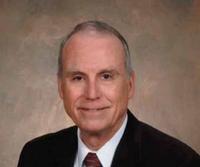-
Man who revealed Israel’s nuclear secrets detained in Jerusalem for talking to foreigners
Nearly thirty years ago, in the fall of 1986, MordechaiVanunu, a low-level technician at Israel’s Dimona nuclear reactor, left Israel for a trip to the Far East. He settled in Australia, converted to Christianity, and sometime in August that year began to talk with Peter Hounam, a London Sunday Times reporter, about what he saw at Dimona. He spent eighteen years in jail, eleven of these years in solitary confinement, and was released, under severe restrictions, in 2004. Last Thursday he was detained in Jerusalem for violating one of his release conditions: he talked with two foreigners, that is, non-Israelis, for more than half-an-hour.
-
-
How to verify a comprehensive Iran nuclear deal
With the negotiation between the P5+1(the United States, European Union, Britain, France, Russia, and China) and Iran resuming yesterday (Wednesday) about a set of parameters for an eventual Joint Comprehensive Plan of Action, the shape of a final deal about Iran’s nuclear program has emerged. Many important provisions of a final deal, however, remain to be negotiated in the coming months. David Albright, the president of the Institute for Science and International Security, says that a critical set of these provisions involves the adequacy of verification arrangements which would be in place to monitor Iran’s compliance with a deal. Tehran’s long history of violations, subterfuge, and non-cooperation requires extraordinary arrangements to ensure that Iran’s nuclear program is indeed peaceful.
-
-
Canada reflective, tense in wake of attack on parliament building
Canadians are still in shock today — the Globe and Mail’s healdine reads: “Attack on Ottawa: Brazen assault could be turning point for Canada” — at the realization that their country is not more immune to terrorist attacks than their neighbor to the south or fellow democracies across the Atlantic. There were acts of terrorism in Canada in the past — mostly committed by Quebec separatists in the late 1960 and early 1970s — but yesterday’s attacks had a different feel to them. “A gunman struck at the heart of the Canadian government…. in what was one of the most brazen attacks on a Western government in recent history,” the Globe and Mail wrote.
-
-
Scientists improve accuracy, reliability of nuclear tests inspection
The Comprehensive Nuclear-Test-Ban Treaty Organization (CTBTO) operates the International Monitoring System (IMS) — 279 sensors-equipped facilities around the world which detect four types of physical phenomena that can provide evidence of a nuclear explosion having taken place: seismic waves, radioactive nuclei, underwater sound waves, and infrasonic waves. The evidence from the IMS is not always enough to convince signatories of the CTBT that a nuclear test has taken place. Scientists are trying to improve the accuracy and reliability of the IMS system.
-
-
U.S. to spend more money on modernizing its nuclear arsenal, less on nonproliferation programs
President Barack Obama has made gains in his quest to secure nuclear weapons and materials. In March, at the Nuclear Security Summitin Holland, Obama declared “it is important for us not to relax but rather accelerate our efforts over the next two years.” The Obama administration, however, is allocating more resources toward refurbishing and modernizing current nuclear weapons than advancing nuclear nonproliferation programs. Civilian institutions, including research labs, today hold enough nuclear explosive materials to put together 40,000 atomic bombs, but the administration has missed a self-imposed deadline of April 2013 for ensuring that nuclear materials were safe from terrorist organizations.
-
-
Continued funding for S.C. mixed-oxide fuel (MOX) plant – at least until fall
Federal legislators have secured the funds to keep the mixed-oxide fuelplant (MOX) at the Savannah River Sitein South Carolina moving forward at least into fall, according to South Carolina governor Nikki Haley and members of the state’s congressional delegation. The 310-square mile site once produced components for nuclear weapons, but since the agreement with Russia to turn nuclear weapons into reactor fuel, the site has focused on repurposing and cleanup.
-
-
Iran wants to expand its uranium enrichment capacity

Iran’s Supreme Leader Ayatollah Ali Khamenei said on Tuesday that Iran would need significantly to increase its uranium enrichment capacity for future energy needs, dealing a setback to negotiations between the country and world powers.
-
-
Game of marbles inspires nuclear-inspection protocol

Modern cryptography combined with simple radiation detectors could allow nuclear-weapons checks to be carried out with almost complete security. That is the conclusion of scientists in the United States, who have used computer simulations to show how a beam of neutrons can establish the authenticity of a nuclear warhead without revealing any information about that weapon’s composition or design.
-
-
Engineering nuclear nonproliferation

University of Virginia engineering professor Houston Wood’s career demonstrates the important role that engineers can play in making the world a safer place. For more than two decades, Wood has helped governments determine whether nuclear programs in other parts of the world are being dedicated to peaceful or military purposes. In recent years, Wood has been working to determine the break-out time that Iran would require to develop a nuclear weapon if it stopped allowing the International Atomic Energy Agency IAEA) to inspect its nuclear facilities.
-
-
Lawmakers want DOE to reduce run-away costs of S.C. plutonium processing plant
Lawmakers have given the Obama administration two weeks to submit a plan for reducing the cost of constructing the mixed-oxide fuel conversion (MOX) facility which would convert bomb-grade plutonium into nuclear fuel. The MOX facility at the Savannah River Site, South Carolina was launched to help the United States meet its nuclear arms reduction agreement with Russia, and agreement which called for the two countries to dispose of at least thirty-four metric tons each of weapons-grade plutonium.
-
-
U.S. officials say Israel softening position on nuclear deal with Iran
Israel’s official position on any agreement reached between the world powers and Iran over Iran’s nuclear program is “zero, zero, zero,” that is, Israel insists that the agreement should clearly stipulate that Iran should have no centrifuges to enrich uranium, no centrifuge production capability, and no heavy-water reactor and the means to extract weapon-grade plutonium from it. American officials say, however, that informally there has been a softening of Israel’s position, and that it now appears clear that Israel no longer regards the zero- zero, zero option as realistic and achievable.
-
-
S.C. fights to keep costly plutonium processing project alive
The United States and Russia have agreed to dispose of thirty-four tons of weapon-grade plutonium each, an amount equal to 17,000 nuclear warheads. The United States budgeted $4 billion for a mixed-oxide fuel project, known as MOX, at the Savannah River Site, S.C., to process the plutonium, but construction costs have now reached $8 billion, and officials estimate the facility will cost about $30 billion over its operating years. DOE has suspended the MOX project and is looking for alternative plutonium processing methods. South Carolina has sued the federal government, arguing that since Congress has authorized the funds for MOX, the administration must spend the money.
-
-
NC State awarded $25 million NNSA grant to launch nuclear proliferation detection effort
North Carolina State University was awarded a 5-year, $25 million grant by the National Nuclear Security Administration’s (NNSA) to develop the next generation of leaders with practical experience in technical fields relevant to nuclear nonproliferation. The new Consortium for Nonproliferation Enabling Capabilities, or CNEC, aims to be the pre-eminent research and education hub dedicated to the development of enabling technologies and technical talent for meeting the challenges of nuclear nonproliferation in the next decade.
-
-
New center will work to improve methods to detect, prevent the spread of nuclear weapons
The National Nuclear Security Administration (NNSA) has awarded the University of Michigan $25 million to establish the Center for Verification Technology. A team from thirteen universities will work with eight national labs to analyze nuclear nonproliferation efforts, improve technologies for monitoring weapons-grade materials and detecting secret weapon tests, and train the next generation of nonproliferation experts.
-
-
Possibility of “dirty bombs” a major terrorism threat
The International Atomic Energy Agency (IAEA) has warned that there were 140 cases of missing or unauthorized nuclear and radioactive material in 2013 — a pressing reminder that the possibility of possession of nuclear materials by terrorist organizations is both real and current.
-
- All
- Regional
- Water
- Biometrics
- Borders/Immig
- Business
- Cybersecurity
- Detection
- Disasters
- Government
- Infrastructure
- International
- Public health
- Public Safety
- Communication interoperabillity
- Emergency services
- Emergency medical services
- Fire
- First response
- IEDs
- Law Enforcement
- Law Enforcement Technology
- Military technology
- Nonlethal weapons
- Nuclear weapons
- Personal protection equipment
- Police
- Notification /alert systems
- Situational awareness
- Weapons systems
- Sci-Tech
- Sector Reports
- Surveillance
- Transportation
Advertising & Marketing: advertise@newswirepubs.com
Editorial: editor@newswirepubs.com
General: info@newswirepubs.com
2010-2011 © News Wire Publications, LLC News Wire Publications, LLC
220 Old Country Road | Suite 200 | Mineola | New York | 11501
Permissions and Policies
Editorial: editor@newswirepubs.com
General: info@newswirepubs.com
2010-2011 © News Wire Publications, LLC News Wire Publications, LLC
220 Old Country Road | Suite 200 | Mineola | New York | 11501
Permissions and Policies
